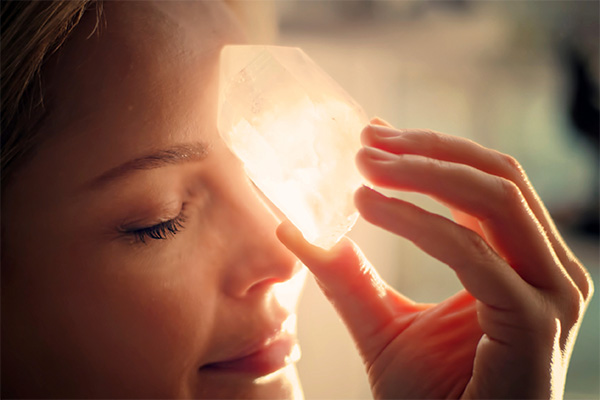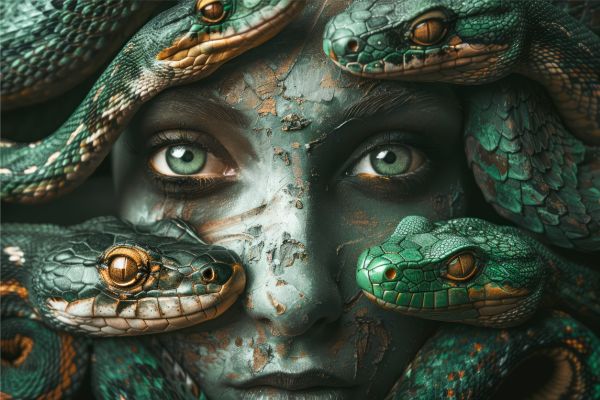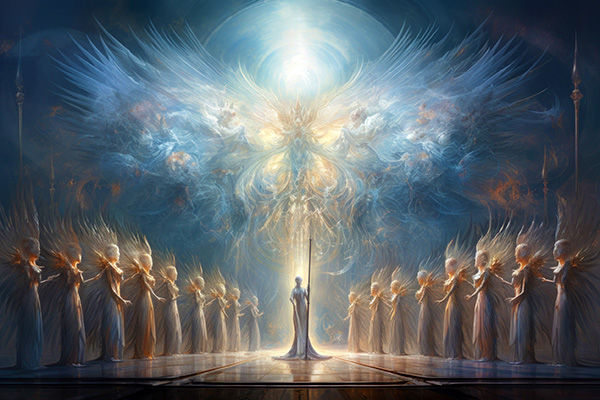What You Should Know About Spiritual Awakening
 We live in a world that worships results. We proudly proclaim them: “I lost twenty pounds,” or “I was voted employee of the month.”
We live in a world that worships results. We proudly proclaim them: “I lost twenty pounds,” or “I was voted employee of the month.”
Tangible achievements deserve recognition. But in the spiritual realm, such milestones don’t exist in the same way. The universe does not operate according to human rules. The metaphysical realms cannot be measured by physical standards.
This is why when it comes time for us to experience a spiritual awakening — also known as an epiphany, illumination or inner shift — there is no outward certificate of success. It’s not something that can be counted or checked off a list. It happens organically, quietly, often unpredictably. And when it comes, it is only the beginning.
Think of it as a small ball of snow set in motion at the top of a hill. As it rolls down, it grows larger and more powerful, accumulating mass and momentum. That’s what spiritual awakening does: it starts with a whisper and becomes a roar. The journey that follows isn’t always easy, but it’s always worth it.
But what exactly is a spiritual awakening? At its core, spiritual awakening is the moment when you begin to perceive reality through a higher, expanded lens. It is a fundamental shift in consciousness — a sudden or gradual realization that there is more to life than what meets the eye.
A sudden awakening is known as “satori” in Zen Buddhism — a sudden moment of awakening or enlightenment. Satori is a flash of insight into the true nature of reality—an experience where the ego momentarily drops away, and one perceives life with profound clarity and unity.
Balance Your Mind With Crystal Energy
 The human brain is a dual force, with the left and right hemispheres complementing each other to create a balanced mind.
The human brain is a dual force, with the left and right hemispheres complementing each other to create a balanced mind.
Each side of the brain brings its own gifts to the whole, working together to shape our unique perceptions and experiences.
The left brain is known for its logical, structured, and analytical approach to processing information, excelling in tasks like reasoning, mathematics, and language.
In contrast, the right brain is more intuitive, imaginative, and emotionally expressive, fueling creativity, visual thinking, and spiritual insight.
This division of cognitive function influences how we think, solve problems, and interact with the world, both internally and externally.
In the realm of energy work and healing, various crystals and stones support and enhance the natural strengths of each brain hemisphere, promoting overall mental and emotional harmony and balance.
Whether you are seeking increased focus for problem solving or a boost in artistic expression, the right combination of crystals can support a harmonious mind that fosters both intellectual and creative growth.
By setting clear intentions and using the appropriate crystals and stones regularly, you can harness their energies to align both hemispheres of the brain and promote an integrated approach to life.
In this sacred balance, the mind and soul find unity, creating a deeper sense of wholeness and fulfillment—a fusion of logic and intuition, structure and flow, thought and feeling.
Ready For Your Spring Spiritual Renewal?
 Today marks the Spring Equinox and the first day of spring in the Northern Hemisphere. Known also as the Vernal Equinox, it is an astronomical event that marks one of the two times of the year when day and night are nearly equal in length. It usually occurs around March 20th or 21st in the Northern Hemisphere.
Today marks the Spring Equinox and the first day of spring in the Northern Hemisphere. Known also as the Vernal Equinox, it is an astronomical event that marks one of the two times of the year when day and night are nearly equal in length. It usually occurs around March 20th or 21st in the Northern Hemisphere.
During the equinox, the sun crosses the celestial equator and moves north. Many cultures and traditions celebrate it as a time of balance, renewal, and growth. As nature shifts into balance, we are invited to do the same — to clear away what no longer serves us and move into a season of light, action, and new beginnings.
Spring is a new beginning. A new sun rising. The dawn in the wheel of the year. At this time of year our minds are bright and alive with new ideas. Many of us feel inspired and excited to try new things. Life awakens in the warm sunlight and our spirits feel ready for a new beginning.
One of the longstanding customs associated with this time of year is the tradition of “spring cleaning.” Across cultures and generations, people have used this time of year to refresh their homes, clear out accumulated clutter, and invite new energy into their lives.
But spring cleaning is more than just cleaning up our physical space — it is a sacred ritual of renewal, release, and transformation. As the earth awakens from hibernation, we too are called to clear out the old and make room for new energy. From a spiritual perspective, this process is an opportunity to realign ourselves with higher frequencies, release stagnant energy, and invite clarity into our lives.
Change Your Thoughts, Change Your Life!
 We’ve all had those days when all we do is tear ourselves down. In moments of self-judgment and negativity, we tell ourselves that we’re not good-looking enough, rich enough, smart enough, young enough, thin enough, talented enough… the list goes on.
We’ve all had those days when all we do is tear ourselves down. In moments of self-judgment and negativity, we tell ourselves that we’re not good-looking enough, rich enough, smart enough, young enough, thin enough, talented enough… the list goes on.
While occasional self-criticism is normal, for many it becomes a lifelong habit of self-torture — an internal dialogue of negativity that shapes their reality.
Negative thinking and judgmental self-talk have profound effects on both mental and physical health. Chronic self-criticism fuels anxiety, depression, and low self-esteem, often leading to feelings of hopelessness and inaction. On a physical level, this mindset increases stress and weakens the immune system, making us more susceptible to disease.
But beyond psychology and biology, this pattern also has metaphysical implications — it acts as a self-fulfilling prophecy. The more we tell ourselves that we are unworthy, incapable, or unlucky, the more these beliefs take root in our energy field. Over time, they manifest as actual experiences in our daily lives, reinforcing the very negativity we wish to escape.
The good news? Just as negative thoughts shape our reality, so do positive thoughts. When we shift our mental energy toward uplifting, empowering, and constructive thoughts, we raise our energetic vibration. Over time, this inner shift produces tangible results — our confidence grows, new opportunities arise, and life begins to feel more fulfilling.
The Mystical Year Of The Yin Wood Snake
 As we settle into 2025, the energy of the Yin Wood Snake begins to take shape, revealing its unique rhythm and influence.
As we settle into 2025, the energy of the Yin Wood Snake begins to take shape, revealing its unique rhythm and influence.
While the excitement of the Chinese Lunar New Year celebrations may have faded, the true essence of the year is beginning to unfold.
Now is the perfect time to align with the energies of the Wood Snake, harness its mystical power, and set a clear, intentional path for the months ahead.
The Year of the Wood Snake brings a harmonious fusion of intuition, mystery and steady growth.
The Snake, known for its wisdom and transformation, merges with the nurturing and grounding essence of the Wood element this year, fostering patience, adaptability, and a deep connection to our spiritual and emotional roots.
Unlike the impulsive Fire Snake or the analytical Metal Snake, the Wood Snake encourages thoughtful progress and long-term vision, making 2025 an ideal year for meaningful evolution.
In many cultures, the Snake symbolizes rebirth, wisdom and mystery. Its ability to shed its skin represents the release of outdated beliefs, limitations, and habits, clearing the way for renewal. This year invites you to embrace transformation, trust your intuition, and align with the subtle yet powerful energy of the Snake as you enter a year of profound personal and spiritual growth.


